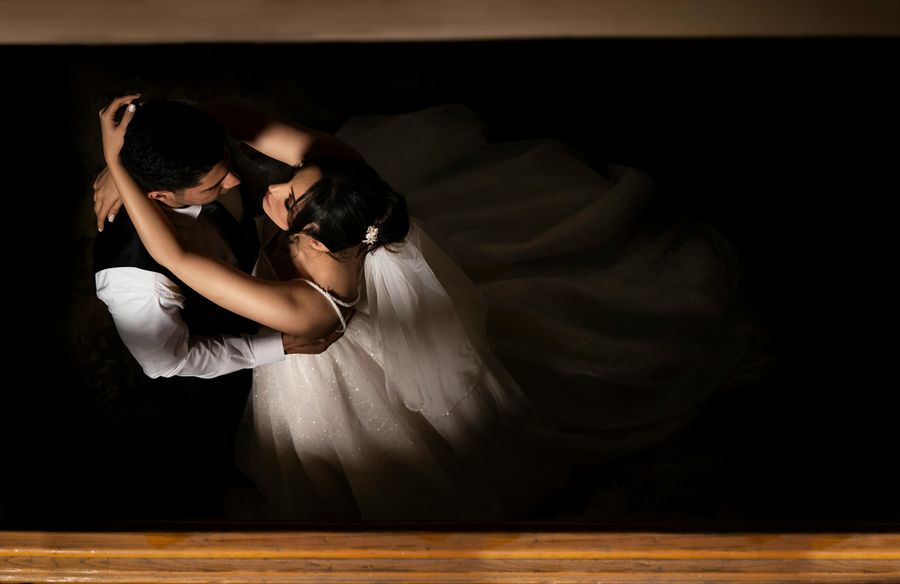History of Marriage Vows
Marriage is one of the most significant milestones anyone can take in life. For many centuries, marriage has been accompanied by a set of vows, which the couple exchange as a public declaration of their love and commitment to each other.
The evolution of marriage vows is an interesting enough topic to explore, as it can give us insights into the customs and beliefs of different cultures and religions. In this article, we will delve into the history of marriage vows and traditional Catholic wedding vows.
Earliest Records of Marriage Vows
The earliest known record of marriage vows dates back to ancient Rome, where the couple would declare their marriage in front of a group of witnesses. In the Middle Ages, the primary focus was on the exchange of rings rather than vows.
The Reformation Period
It was only during the Reformation period in the 16th century when marriage vows started to evolve into the form we know them today.
The Role of the Anglican Book of Common Prayer
The Anglican Book of Common Prayer played a significant role in shaping the modern concept of marriage vows. James I of England ordered the compilation of the Book of Common Prayer to provide a standard set of guidelines for Anglican worship and ceremonies.
Today, many Anglican wedding ceremonies still feature marriage vows from the 1662 version of the Book of Common Prayer. Catholic wedding guides similarly establish different guidelines that are followed.
Significance of Catholic Marriage Vows
The Catholic Church views marriage as a sacrament, a holy institution established by God. The exchange of marriage vows is a solemn and sacred act, which establishes the couple’s commitment to each other.
The vows are also significant because they embody the sacramental nature of marriage, which reflects the unbreakable bond between Christ and the Church.
Traditional Catholic Wedding Vows
Guidelines for Catholic Wedding Vows
The Catholic Church offers several options for the exchange of marriage vows, depending on the couple’s preference. The Rite of Marriage, which is the liturgical ceremony for Catholic weddings, offers four different forms of vows, which the couple can choose from.
The priest officiating the ceremony will usually offer guidance to the couple on the options available.
Standard Version of Traditional Catholic Vows
The traditional Catholic marriage vows have remained relatively unchanged over the centuries. The standard version of Catholic wedding vows typically includes the following:
“I, (name), take you, (name), to be my lawfully wedded wife/husband, to have and to hold from this day forward, for better, for worse, for richer, for poorer, in sickness and in health, until death do us part.”
These vows emphasize the couple’s commitment to each other in good times and bad, in sickness and health, and until death separates them.
Acceptable Variations of Catholic Vows
While there is a standard version of the Catholic wedding vows, certain acceptable variations are allowed. For example, instead of saying “until death do us part,” couples can say “as long as we both shall live.” Couples may also choose to replace “in sickness and in health” with “in prosperity and adversity” or “in joy and in sorrow.” The couple may also choose to replace “I will” with “I do,” as seen in some Anglican wedding ceremonies.
Conclusion
Marriage vows have come a long way since ancient Roman times. The evolution of marriage vows reflects societal and religious changes, as well as the development of traditions and customs.
The Catholic Church’s views marriage as a sacrament, with the exchange of vows being an integral part of the sacrament. The tradition of writing vows has enabled couples to express their love and commitment to each other in a memorable way.
No matter what form they take, marriage vows will always remain a powerful symbol of love and commitment. When you attend a Catholic wedding, you can expect to witness various rituals that are steeped in tradition and symbolism.
Catholic Wedding Rituals
Exchange of Rings
The exchange of rings is a crucial and symbolic aspect of a Catholic wedding ceremony. The priest blesses the rings, and then the couple exchanges them as a sign of their commitment to each other.
As they do so, they recite the following words:
“(Name), take this ring as a sign of my love and fidelity. In the name of the Father, and of the Son, and of the Holy Spirit.”
By placing the ring on the fourth finger of the left hand, which was believed to contain the “vein of love,” the couple symbolizes their mutual love and commitment to each other, as well as their faith in God as the foundation of their marriage.
Declaration of Husband and Wife
After the exchange of rings, the priest declares the couple as husband and wife. He may say something like:
“What God has joined together, let no one put asunder.”
This declaration is a reminder that the couple’s union is sacred and cannot be easily broken.
The words “what God has joined together” affirm that Catholic marriage is not just a legal contract between two people, but a covenant established by God.
Writing Your Own Vows
While there is a standard version of traditional Catholic wedding vows, couples may choose to write their own vows instead. Writing your own vows can be a deeply personal and meaningful experience, allowing you to express your love and commitment to your partner in your own words.
However, it is vital to remember that the exchange of vows is a sacred moment and should be treated with utmost respect. The vows should strike a balance between expressing your own personalities and beliefs while also acknowledging the sacredness of the moment and the unity of the Church.
When writing your own vows, you can consider incorporating these three elements:
- Personal Statement: Begin with addressing your partner and expressing what they mean to you personally.
- Pledge of Love and Commitment: This is where the exchange of vows takes place. You can include specific promises to your partner about the way you will treat them, how you will love and support them, and how you will work together to keep your marriage strong.
- Dedication to the Holy Trinity: End with an acknowledgment of the sacredness of the moment and the role that God plays in your life together.
You may want to include a prayer or a blessing that specifically references the Father, Son, and Holy Spirit. Remember that while writing your own vows can feel daunting, it can be an incredibly rewarding experience that allows you to truly express your feelings and dedication to your partner.
However, you should always consult with your priest or officiant to ensure that your vows align with the Church’s teachings and guidelines. After all, your wedding day is about the union of two people in love, but it is also a celebration of the sacrament of marriage and the unity of the Church.
In conclusion, marriage is an essential institution that has been shaped and celebrated across different cultures and religions. Catholic wedding rituals embody the deep commitment and sacred nature of the union between two people as well as their faith in God.
The exchange of rings, the declaration of the husband and wife, and the option to write your own vows all provide powerful symbols of love, commitment, and faith. Understanding the history and significance of these rituals can enrich your experience as a participant or as an observer of a Catholic wedding ceremony, reminding us of the importance of love, respect, and devotion in our lives.



